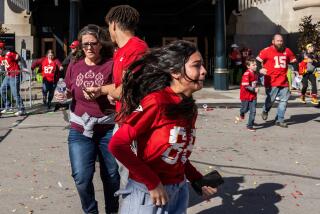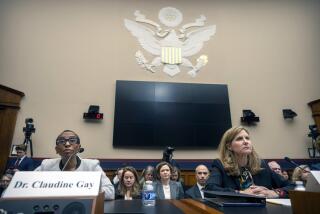On âWhiteness,â U.S. Racism and the Culture of Bullying
Kudos to The Times for bringing to light an unexamined yet pervasive contemporary social phenomenon in our society (âA Call to Take a Closer Look at the Culture of âWhiteness,â â March 13). Whites, as a group, tend to view themselves as individuals, while viewing others as members of a group. Hence, racial stereotyping seems normal when evaluating others but inappropriate when discussing themselves. Therefore, when whites commit unconscionable acts, the event is perceived by whites as an exception to the norm, rather than as an indication that something intrinsic to the group may be at the root of the behavior. Yet even a cursory examination of workplace violence, schoolyard violence, serial killers and other senseless acts of random violence indicates that the overwhelming majority of the perpetrators are white men.
White entitlement is attributable to equating whiteness with being normal, i.e., the standard. Nonwhite is equivalent to being nonstandard. It almost never occurs to whites that bungee jumping, base jumping, skydiving, rock climbing and other extreme sports are largely viewed by nonwhites as crazy. The lack of dynamic life tension that results from the insularity, conformity and normalness of being white often results in identity boredom, a desperate act to create excitement. Minorities have sufficient dynamic tension as a result of navigating through the white manâs world.
Only as whites view themselves more objectively will they be able to view others less subjectively and, therefore, more readily accept and address issues that seem to be peculiarly idiosyncratic to their group.
KIRK C. RASCOE
Director, Equal Opportunity
Programs, LAUSD
*
Growing up in a multiracial, diversely ethnic neighborhood in San Francisco, I remember clearly who the bullies seemed to be: white, all-American boys. I never understood their sense of entitlement.
We seem too eager to analyze other groups and their patterns. Tim Wiseâs essay has shown us the path to stopping this epidemic of school shootings. Like most of our problems, it has its roots in nature. Letâs start there.
DIANE NICHOLS
Los Angeles
*
The article was nothing but an example of reverse racism. The numerous calumnies aimed at âwhite peopleâ (that they have no compassion, have closed minds, grow up in luxury and privilege, etc.) would not have been allowed in The Times had they been aimed at any other group.
The notion that all whites share certain traits because they are the majority in this country is nonsense. Peopleâs attitudes are formed by the racial and ethnic composition of the communities in which they live, not the statistical makeup of the country as a whole. To claim that whites have a feeling of superiority because they are the U.S. majority is as ridiculous as claiming that nonwhites feel superior because they comprise the majority of the world population. People react to their immediate surroundings, not communities that are thousands of miles away.
KYLE COCHRANE
Los Angeles
*
Tim Wiseâs theory about school shootings and the âculture of whitenessâ is flawed because of one glaring omission. Wise wonders why âwhite boysâ go on rampages because of teasing and bullying, while students of other races and genders donât.
Wise doesnât mention that most schools have, over the past decade, instituted zero-tolerance policies for acts of racial or gender harassment. Students who are harassed for those reasons have their complaints taken very seriously by litigation-weary school administrators afraid of civil-rights lawsuits and bad publicity. White male students who are bullied, like [Santee shooting suspect] Andy Williams, are told to grin and bear it and thatâs part of growing up.
If we took the bullying of white boys as seriously as we do the bullying of other children, we might see a reduction in school shootings.
JANET T. SANDERSON
Los Angeles


